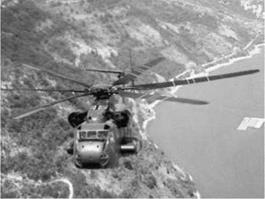Structural bonding of the rotor blades of helicopters is a particularly good example of the high performance of modern adhesive bonding technology. With a service life of several thousand flight hours, these components are exposed to the most severe dynamic and climatic load conditions. Adhesive bonding technology is necessary for the realization of modern rotor blades.
In the case of rotor blades of heavy transport helicopters, failures regularly occurred on a structural bonded joint between the upper outer cover sheet and the spar. The outer cover sheets delaminated during flight and induced strong vibrations in the rotor such that, in the majority of cases, an emergency landing was required.
The rotor blades were put back into service following repair of the damage, until the next failure occurred. This type of failure led to repair costs of several million Euros, because on the rotor blades one blade pocket after another failed unpredictably and had to be repaired. Ultimately, this type ofblade had to be replaced because ofdesign problems. Yet, in only a few cases was nondestructive testing able to identify delamination in its early stages; consequently, a preventive repair was not possible (Figure 7.61).
A rotor blade consists of an 11m-long aluminum spar with 25 bonded ‘blade pocket’ segments made from aluminum sheet. Together with the rotor blade pocket, the spar (leading edge of the blade) forms a wing profile. In the case of a failure the segmentation into rotor blade pockets limits the propagation ofa delamination ofthe outer cover sheet of the rotor blade and maintains the overall function of the rotor.
On the upper and lower surfaces, the outer cover sheet of the blade pocket is bonded to the spar with a lap length of 40 mm each (Figure 7.62). Although, insufficient surface preparation of the aluminum adherents was suspected as the reason for the failure of bonded rotor blade pockets, microfractography revealed only cohesive failure of the adhesive.
|
Figure 7.61 Failure delamination in rotor blades. |
|
Figure 7.62 Delaminated rotor blade and starting crack in the bond-line between spar and outer cover sheet. |
Adhesive interface failure did not occur in either of these cases, and consequently, inadequate surface preparation of the aluminum adherents could be ruled out as the cause of the damage. Indeed, the cause of the failure was determined to be a design deficiency. Due to the airflow around the rotor blade profile, there is a lower pressure above the blade than below (vertical lift), which bends up the trailing edge of the profile. Due to this aerodynamic loading of the rotor blade, the pocket-spar skin joint at the bottom side of the blade is under tensile stress, while the upper skin joint is in compression. Although both skins transfer these loads to the spar through the bond in shear, there is a difference between the upper and lower skins. With the existing construction of the rotor blade pocket, tensile stress of the lower bond implies a uniform stress distribution for the bond-line, whereas on the upper side the shear stress is combined with a peel load. Compression causes a peel force at the transition between the outer cover sheet and the spar bonding on the upper side of the blade. Additional peel forces generated by a torsion movement of the relatively narrow rotor blade pocket foster the failure. Crack initiation occurred at the left and right forward corners of the pocket segment bond and propagated by fatigue and cohesive failure of the adhesive, ultimately evolving into a rapidly progressing complete delamination and loss of the outer cover sheet under aerodynamic loading of the rotor blade. This failure was due to a fundamental design defect of the rotor blade. With regards to the layout of the bonded joint between the outer cover sheet and the spar, no measure was taken to prevent peel forces from developing between the adherents. As this design defect could not be repaired, and the design was not suitable for bonding, the rotor blades had to be removed from service and redesigned.
7.8.2
 31 октября, 2015
31 октября, 2015  Pokraskin
Pokraskin 

 Опубликовано в рубрике
Опубликовано в рубрике 